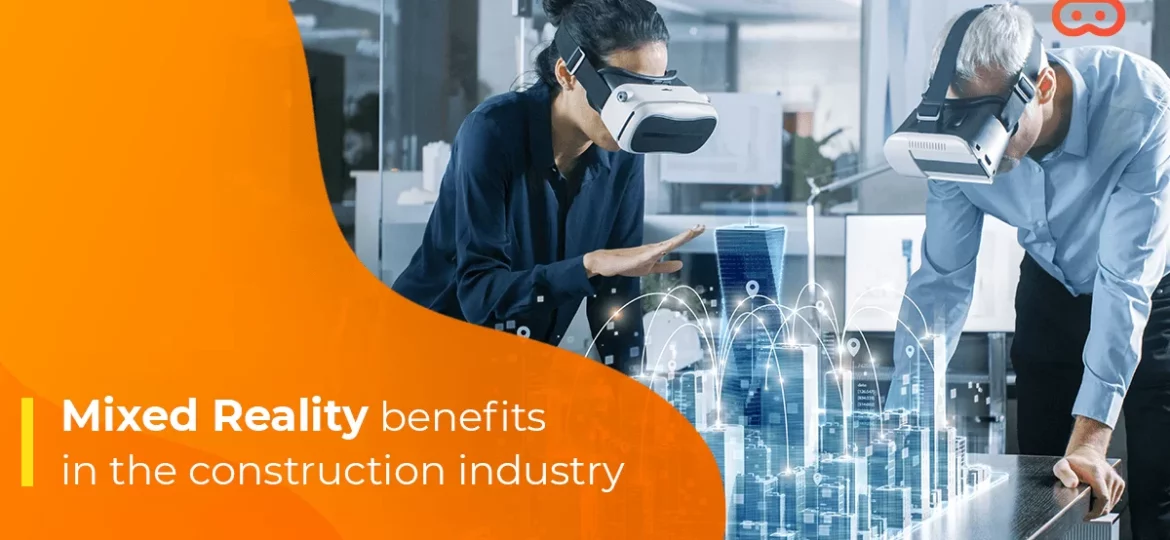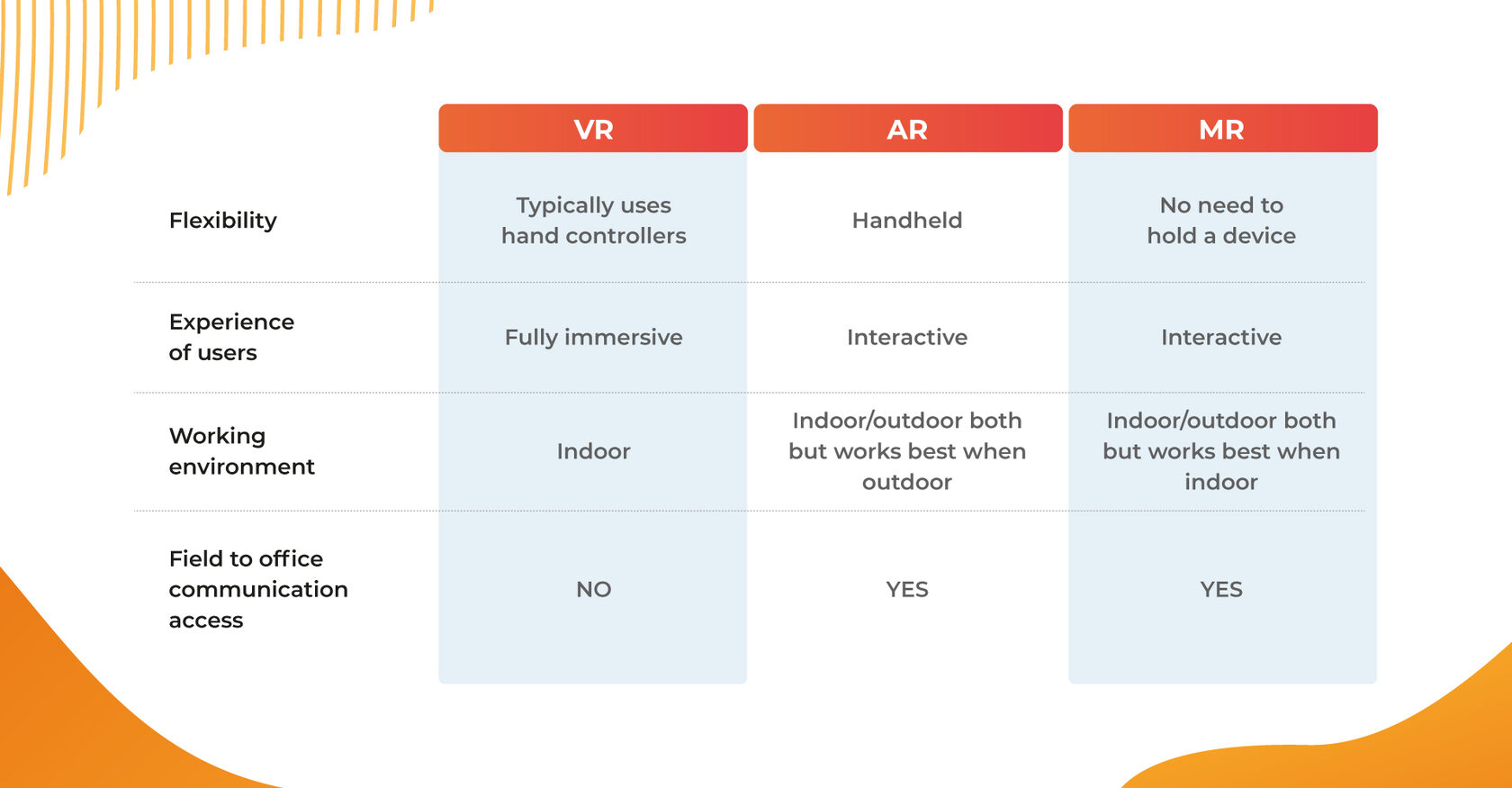
As technology advances, the way we view and comprehend space, the environment, and objects evolves, giving reality new meaning and shape. Leveraging reality technology, a wide range of enterprises and sectors are enhancing and expanding their operations to drive growth. The construction industry is no exception. The technology used in construction has advanced dramatically. This sector is now adopting mixed reality to attain new levels of accuracy and efficiency, moving past 3D models and drones. By using mixed reality (MR), construction professionals can obtain a closer look at all the components and details of the project before it is executed.
Understanding mixed reality (MR)
With the help of the technology known as ‘mixed reality,’ the real and virtual worlds can interact simultaneously to produce brand-new scenarios. It is referred to as ‘mixed’ because it combines real and virtual environments with immersive technology, enabling users to see holographic information from a 3D model superimposed on the existing environment. Contractors and consultants will need to understand what MR technologies are, how they can be employed, and the advantages they offer as they continue to gain traction in the construction sector.
This article will outline how virtual, augmented, and mixed reality work, their applications, and their benefits for the industry. Read on.
Using MR technologies in construction
MR has many applications in the construction industry; however, each technology has its own considerations and is most effective in certain situations. Understanding virtual, augmented, and mixed reality more thoroughly will make it more transparent which technology to use in certain circumstances.
Virtual Reality (VR)
How it operates
Virtual reality emerged in the gaming business when immersive gamers wore special glasses that blocked out their surroundings and displayed a ‘virtual’ reality. VR glasses, whether used for gaming or construction, operate using the same principles. Motion sensors in the hardware detect when the user rotates their head. Additionally, the user can point, interact with virtual items, and control their experience via portable devices.
VR applications in construction
VR provides a fully immersive and dynamic individual experience and especially comes in handy for designing teams, contractors and owners when reviewing and approving plans and understanding sites and spaces.
Some examples of how to leverage VR
- Owners can fully immerse themselves in the envisioned design of a future structure and witness the idea come to life.
- VR bridges the gap between physical and remote presence. A team member who may not be on the job site but wants to understand the conditions there can virtually visit a scanned 3D model of the site in the office.
- Construction companies can train staff on specific jobs in a secure setting using virtual reality, such as how to operate heavy machinery or install electrical wiring.
Augmented Reality (AR)
How it operates
AR in construction often uses a mobile device, like a tablet or smartphone. Augmented Reality merges the physical and digital worlds by superimposing digital data over the user’s actual environment. The user can visualize the placements of the entire structure, designs, features, objects, or systems by using the smartphone’s built-in camera.
AR applications in construction
Civil engineering, construction, and geospatial tasks all benefit significantly from AR.
Some examples of how to leverage AR
- Construction crews can identify and designate underground services or utilities using AR.
- The mechanical, electrical, or plumbing team can visualize the floors/walls to comprehend how and where MEP systems and equipment are placed. It helps them to compare the finished work against the recorded plans to spot potential conflicts.
- Contractors can use AR to inspect to verify that the work has been built, installed, or finished adequately.
Mixed Reality (MR)
How it operates
The immersive VR and interactive AR concepts are combined to create a mixed reality. The user can immerse themselves in the digital content while maintaining awareness of their physical environment, including other people, using a headset device with a lens. They can simultaneously engage with digital and actual objects.
MR applications in construction
While using the MR headset, the user can view and interact with the model accurately, 1:1, surface-to-surface, without holding a device.
Some examples of how to leverage AR
- Building Information Modelling designers can work together to create a 3D model of a building or structure by ‘touring’ before it is finished.
- Contractors can compare components using MR and install them on a construction site in accordance with manufacturer instructions.
- Similar to AR, project teams can spot conflicts with already-installed systems and bring them to the manager of virtual design and construction (VDC) for assistance in resolving the issue.

Benefits of MR: Reasons for being more than just a wow factor
Construction professionals may more easily see, comprehend, and transmit information thanks to MR technology as a whole. Every tool aid in assisting construction teams to ‘see’ digital content differently and for various goals. For these reasons, mixed reality in the construction landscape is not limited to just a wow factor or the latest gadget.
Construction companies are using MR to overcome significant obstacles, enabling them to
- Foster more stakeholder involvement by enhancing communication and a joint effort by bridging the gap between field and office
- Increase productivity by quickening decision-making and decreasing downtime and rework
- Enhance safety by enabling extensive planning and instruction
- No information or data is ever lost
Mixed reality can make construction projects much more efficient by eliminating the limitations of flatscreens, bulky gear, and scattered information. A lot will change in the next few years. By checking out MR and seeing what it can do for the construction sector, individuals will be more likely to embrace new digital tools.

